
Torotoro National Park: Bolivia's Hidden Gem
Discover Torotoro National Park in Bolivia: A stunning blend of natural beauty, adventure, and ancient history, offering dinosaur tracks, canyons, caves, and waterfalls.
Nestled in the heart of Bolivia, Torotoro National Park is a treasure trove of natural wonders and ancient history. This lesser-known park offers a breathtaking array of landscapes, from deep canyons and rugged mountains to lush valleys and striking caves. The park is a paradise for nature lovers and adventure seekers alike, with opportunities for hiking, spelunking, and even dinosaur footprint exploration. One of the park’s most captivating features is the Torotoro Canyon, a dramatic chasm carved by the Caine River. Visitors can hike down into the canyon to admire its impressive rock formations and swim in the crystal-clear pools at the base of the El Vergel waterfall. Another highlight is the Humajalanta Cave, one of Bolivia's largest and most fascinating cave systems, where intrepid explorers can discover underground rivers, stalactites, and stalagmites. For history enthusiasts, Torotoro National Park offers a glimpse into the past with its well-preserved dinosaur tracks and fossils. The park is home to some of the most significant paleontological sites in South America, where visitors can walk in the footsteps of dinosaurs and learn about the prehistoric creatures that once roamed this land. Additionally, the park boasts ancient rock paintings and Inca ruins that provide insight into the region’s rich cultural heritage.
Local tips in Torotoro National Park
- Wear sturdy hiking boots for the rough and varied terrain.
- Bring a flashlight for exploring Humajalanta Cave.
- Visit the park during the dry season (May to October) for the best weather conditions.
- Hire a local guide to enrich your experience with detailed knowledge about the park's features.
- Pack plenty of water and snacks, as facilities within the park are limited.
Torotoro National Park: Bolivia's Hidden Gem
Nestled in the heart of Bolivia, Torotoro National Park is a treasure trove of natural wonders and ancient history. This lesser-known park offers a breathtaking array of landscapes, from deep canyons and rugged mountains to lush valleys and striking caves. The park is a paradise for nature lovers and adventure seekers alike, with opportunities for hiking, spelunking, and even dinosaur footprint exploration. One of the park’s most captivating features is the Torotoro Canyon, a dramatic chasm carved by the Caine River. Visitors can hike down into the canyon to admire its impressive rock formations and swim in the crystal-clear pools at the base of the El Vergel waterfall. Another highlight is the Humajalanta Cave, one of Bolivia's largest and most fascinating cave systems, where intrepid explorers can discover underground rivers, stalactites, and stalagmites. For history enthusiasts, Torotoro National Park offers a glimpse into the past with its well-preserved dinosaur tracks and fossils. The park is home to some of the most significant paleontological sites in South America, where visitors can walk in the footsteps of dinosaurs and learn about the prehistoric creatures that once roamed this land. Additionally, the park boasts ancient rock paintings and Inca ruins that provide insight into the region’s rich cultural heritage.
When is the best time to go to Torotoro National Park?
Iconic landmarks you can’t miss
Parque Nacional Torotoro
Explore the breathtaking landscapes, rich paleontological sites, and vibrant culture of Parque Nacional Torotoro in Bolivia.

Toro Toro National Park
Explore the natural wonders, dinosaur footprints, and rich biodiversity of Toro Toro National Park in Bolivia – a paradise for nature and adventure enthusiasts.

Caverna Umajalanta
Discover the magical Caverna Umajalanta in Estancia Inca Corral, Bolivia, a captivating cave system rich in geological wonders and biodiversity.

Cañon de Toro Toro
Discover the breathtaking beauty of Cañon de Toro Toro, a scenic spot in Bolivia renowned for its stunning rock formations and rich biodiversity.

NACIONAL TOROTORO - SERNAP Park
Discover the breathtaking beauty and diverse wildlife of Nacional Torotoro National Park in Bolivia, a paradise for nature lovers and adventure seekers.

Huellas de Dinosaurios
Explore the remarkable Huellas de Dinosaurios in Torotoro, Bolivia, where ancient dinosaur footprints tell the story of our planet's prehistoric past.

Cascada Toro Wharku
Explore the breathtaking Cascada Toro Wharku, a serene waterfall in Vacas, Bolivia, perfect for nature lovers and cultural explorers.

El Vergel
Explore El Vergel, Bolivia's stunning tourist attraction, where nature's beauty meets adventure in the heart of Torotoro.

Ciudad de ITAS - ToroToro
Explore Ciudad de ITAS - ToroToro, a breathtaking Bolivian park known for its stunning canyons, ancient dinosaur footprints, and rich biodiversity.

Plaza Principal
Experience the vibrant atmosphere of Plaza Principal in Torotoro, where culture meets nature in a stunning park setting.

Carreras Pampa
Discover the captivating Carreras Pampa, a stunning tourist attraction in Torotoro, Bolivia, showcasing prehistoric geological formations and fossils.

Condor Viewpoint Torotoro
Discover the stunning Condor Viewpoint in Torotoro, a breathtaking location for wildlife observation and panoramic views of Bolivia's natural landscapes.

Oficina Central Parque Nacional Torotoro
Discover the natural wonders and rich biodiversity of Parque Nacional Torotoro, a captivating destination for nature lovers and adventure seekers in Bolivia.

Unmissable attractions to see
Cristo de la Concordia
Explore Cristo de la Concordia, a towering symbol of faith in Cochabamba, offering breathtaking views and cultural insights into Bolivia.

Parque Mariscal Santa Cruz
Explore the natural beauty and cultural vibrancy of Parque Mariscal Santa Cruz in Cochabamba, a peaceful retreat for relaxation and leisure.

Prehistorico Sacaba Park
Explore the captivating blend of nature and history at Prehistorico Sacaba Park, a must-visit tourist attraction in Bolivia's beautiful Sacaba!

Parque Nacional Amboró
Explore the breathtaking biodiversity and rich cultural heritage of Parque Nacional Amboró, a must-visit national park in Bolivia's stunning landscapes.

Toro Toro National Park
Explore the breathtaking landscapes and rich biodiversity of Toro Toro National Park, a must-visit destination for adventure lovers in Bolivia.

Parque Nacional Madidi
Explore Parque Nacional Madidi: A biodiversity hotspot in Bolivia, where lush landscapes and rich wildlife await every traveler.

Laguna Turquesa (Embalse Millu Mayu)
Experience the serene beauty of Laguna Turquesa, a hidden gem in Tarata, Bolivia, known for its stunning turquoise waters and tranquil landscapes.

Caverna Umajalanta
Discover the majestic Caverna Umajalanta in Bolivia, where stunning rock formations and vibrant ecosystems await your exploration in an unforgettable adventure.

Museo del Charango - Aiquile
Explore the unique heritage of the charango at Aiquile's Museo del Charango, a cultural hub celebrating Bolivia's musical traditions.

Cañon de Toro Toro
Explore the breathtaking Cañon de Toro Toro, a stunning natural wonder in Bolivia known for its dramatic landscapes and rich biodiversity.

NACIONAL TOROTORO - SERNAP Park
Explore the breathtaking landscapes and rich biodiversity of Nacional Torotoro National Park, a hidden gem in Bolivia perfect for adventure seekers and nature lovers.

Huellas de Dinosaurios
Explore Huellas de Dinosaurios in Torotoro, Bolivia - a fascinating site of ancient dinosaur footprints that brings the prehistoric world to life.

Cascada Toro Wharku
Explore the breathtaking beauty of Cascada Toro Wharku, a stunning waterfall in Vacas, Bolivia, surrounded by lush landscapes and tranquility.

El Vergel
Explore El Vergel, a stunning natural attraction in Torotoro, Bolivia, offering breathtaking landscapes and rich biodiversity for every nature lover.

Cementerio de Tortugas
Explore Cementerio de Tortugas, a serene archaeological site in Bolivia showcasing ancient burial traditions amid stunning landscapes.

Essential places to dine
Pizzería Snack Vergel Jurásico
Discover delicious pizza amidst stunning landscapes at Pizzería Snack Vergel Jurásico in Torotoro.

Café Cretácico
Discover Café Cretácico in Torotoro – where delightful Bolivian cuisine meets stunning natural beauty in a cozy atmosphere.

Encuentro torotoreño
Experience authentic Bolivian cuisine at Encuentro Torotoreño in picturesque Torotoro – a culinary journey not to be missed!

El Molino Lodging - Restaurant
Experience authentic Bolivian cuisine amidst stunning landscapes at El Molino Lodging - Restaurant in Torotoro.

APTHAPI RESTAURANTE
Experience authentic Bolivian cuisine surrounded by breathtaking nature at Apthapi Restaurante in Toro Toro National Park.
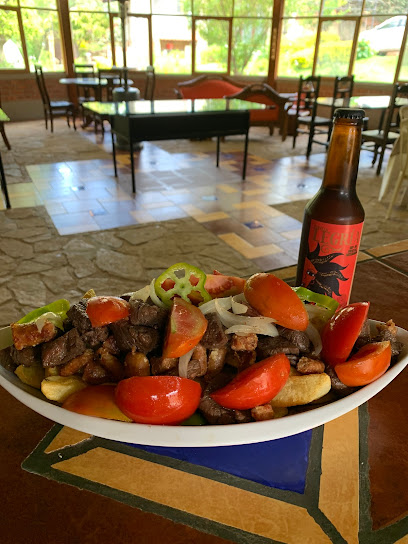
Restaurante El Recuerdo
Experience authentic Bolivian cuisine at Restaurante El Recuerdo in scenic Torotoro - where every dish tells a story.

Markets, malls and hidden boutiques
Parque Nacional Torotoro
Explore the breathtaking landscapes and rich biodiversity of Parque Nacional Torotoro, a hidden gem in Bolivia's natural heritage.

Toro Toro National Park
Explore the breathtaking landscapes and rich biodiversity of Toro Toro National Park, a must-visit destination for nature lovers and adventure seekers in Bolivia.
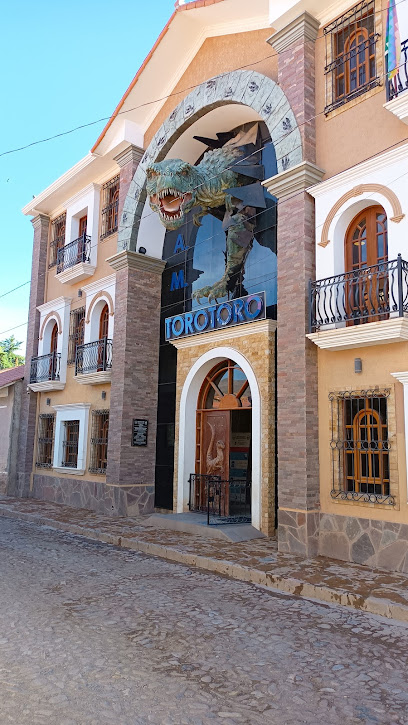
Caverna Umajalanta
Discover the breathtaking beauty and geological wonders of Caverna Umajalanta, a must-visit natural attraction in Bolivia's stunning landscapes.

Cañon de Toro Toro
Discover the breathtaking beauty of Cañon de Toro Toro, Bolivia’s hidden gem, with its stunning landscapes and rich biodiversity waiting to be explored.

Huellas de Dinosaurios
Discover the prehistoric wonders of Huellas de Dinosaurios, where ancient dinosaur footprints meet stunning natural landscapes in Torotoro, Bolivia.

Cascada Toro Wharku
Discover the breathtaking beauty of Cascada Toro Wharku, a stunning waterfall in Vacas, Bolivia, surrounded by lush nature and scenic hiking trails.
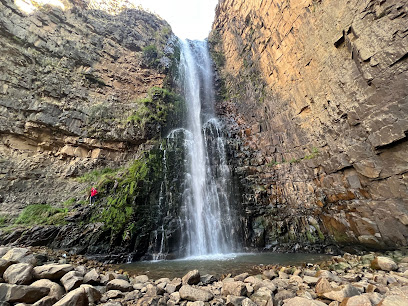
Café Cretácico
Experience the unique flavors of Torotoro at Café Cretácico, where delightful coffee meets rich local culture in an inviting atmosphere.

El Vergel
Explore the stunning landscapes and breathtaking waterfall of El Vergel in Torotoro, Bolivia's hidden gem for nature lovers and adventurers.

Mistura - Manifestación Creativa
Explore Mistura - Manifestación Creativa, a boutique in La Paz showcasing Bolivian artistry through unique clothing and accessories.

EL DINOSAURIO hostal y Café bar restaurante
Experience the charm of El Dinosaurio in Torotoro, where comfort meets Bolivian culinary delights amidst breathtaking natural beauty.
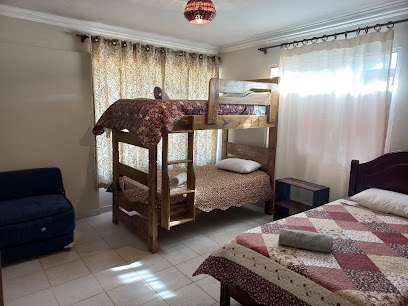
MERCADITO DE DUENDES
Explore the vibrant Mercadito de Duendes in Cochabamba, a gift shop filled with handcrafted treasures and local artistry that encapsulates Bolivian culture.
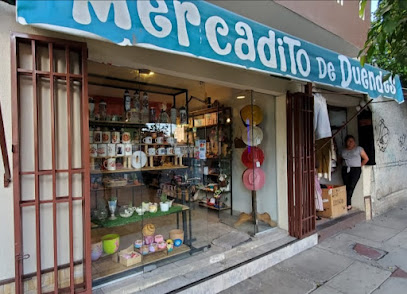
Surtiditos Bolivia
Explore Surtiditos Bolivia, a charming gift shop in Cochabamba, for unique Bolivian crafts and authentic souvenirs that capture the spirit of the region.

Ciudad de ITAS - ToroToro
Explore the breathtaking landscapes and rich geological wonders of Ciudad de ITAS - ToroToro, a hidden gem in Bolivia's natural paradise.

Plaza Principal
Discover the vibrant heart of Torotoro at Plaza Principal, a serene park surrounded by stunning landscapes and rich local culture.

Tienda De Artesanias Rosas T'ika
Discover the essence of Bolivian craftsmanship at Tienda De Artesanias Rosas T'ika, where every handcrafted item tells a unique story.

Essential bars & hidden hideouts
Tio Ramon
Discover the vibrant cocktail culture at Tio Ramon in Punata, offering a delightful array of drinks in a lively atmosphere.

APTHAPI RESTAURANTE
Experience authentic Bolivian cuisine amidst the stunning landscapes of Toro Toro National Park at Apthapi Restaurante.
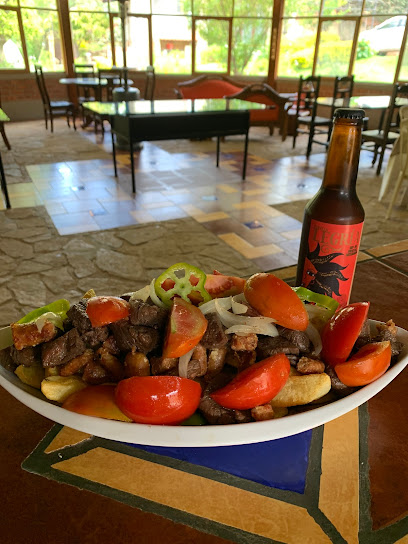
Chicheria el timba
Experience the vibrant nightlife at Chicheria El Timba, a must-visit bar in Punata offering authentic Bolivian drinks and a lively atmosphere.

Chicheria la épica
Experience the vibrant culture of Bolivia at Chicheria la épica, where traditional drinks and a lively atmosphere await every visitor.

Licoreria real
Discover Licoreria Real in Punata: A vibrant bar experience showcasing local drinks and the essence of Bolivian nightlife.

LICORERIA ICEBERG
Experience the vibrant nightlife of Punata at Licoreria Iceberg, where exceptional drinks and a lively atmosphere await every visitor.

LA CUBETA LICORERIA
Discover the vibrant nightlife of Punata at La Cubeta Licoreria, where live music and local culture come together for an unforgettable experience.

Vacas calles
Experience the vibrant nightlife at Vacas Calles in Punata, where local culture meets refreshing drinks and lively interactions.
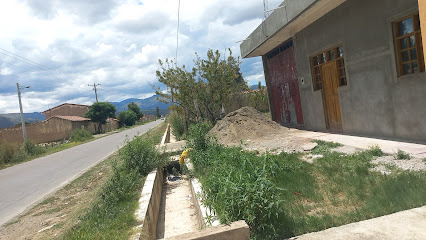
Discoteca Gran Rex
Discover the vibrant nightlife at Discoteca Gran Rex, Torotoro's premier bar for dancing, music, and cultural experiences.

Gastrobar cooltura
Discover the vibrant flavors of Bolivia at Gastrobar Cooltura, Punata's premier destination for innovative cuisine and refreshing drinks.

Servicio de Bartender.
Discover the lively and welcoming atmosphere of Servicio de Bartender, a must-visit bar in Punata offering local flavors and expert cocktails.

Bar el chillijchi
Experience the vibrant atmosphere and local flavors at Bar el Chillijchi in Irpa Irpa – a true Bolivian bar that captures the essence of the region.

Cervecería artesanal drakkar
Discover the essence of Bolivian craft beer at Cervecería Artesanal Drakkar, a brewpub in Sacaba offering unique flavors and a vibrant atmosphere.

VAJILLA GINC TONIC
Discover the vibrant atmosphere of VAJILLA GINC TONIC, where expert mixology and a lively ambiance converge in the heart of Tolata.

Chichería Doña Olga
Discover the local charm of Bolivia at Chichería Doña Olga, a vibrant bar in Punata offering authentic drinks and a lively atmosphere.

Local Phrases about Torotoro National Park
-
- Hello¡Jiw!
[hee-oo] - Goodbye¡Muxsí!
[moo-shee] - Yes¡Arí!
[ah-ree] - No¡Jani!
[ha-nee] - Please/You're welcome¡Juk'ampi!
[hoo-kahm-pee] - Thank you¡Jupaj!
[hoo-pahkh] - Excuse me/Sorry¡Qhispí!
[kees-pee] - How are you?¿Imaynalla?
[ee-mahy-nah-lya] - Fine. And you?Jani. ¿Imaynalla?
[ha-nee. ee-mahy-nah-lya] - Do you speak English?¿Chaymi kastilla rimanakipuni?
[chai-mee kahs-tee-lya ree-mah-nah-kee-poo-nee] - I don't understandMana jani
[mah-nah ha-nee]
- Hello¡Jiw!
-
- I'd like to see the menu, pleaseJani menuy ukhamarani
[ha-nee meh-noo-ee ooh-khah-mah-rah-nee] - I don't eat meatManaña ukhamaniti
[mah-nah-nyah ooh-khah-mah-nee-tee] - Cheers!¡Jallalla!
[khah-lyah-lyah] - I would like to pay, pleaseJani jupanakatarani
[ha-nee hoo-pah-nah-kah-tah-rah-nee]
- I'd like to see the menu, pleaseJani menuy ukhamarani
-
- Help!¡Jani!
[ha-nee] - Go away!¡Jani ukhamarani!
[ha-nee ooh-khah-mah-rah-nee] - Call the Police!¡Jani policia ukhamarani!
[ha-nee poh-lee-see-ah ooh-khah-mah-rah-nee] - Call a doctor!¡Jani doctor ukhamarani!
[ha-nee dohk-tohr ooh-khah-mah-rah-nee] - I'm lostJani jayt'ayu
[ha-nee khahy-tah-yoo] - I'm illJani wayna
[ha-nee wahy-nah]
- Help!¡Jani!
-
- I'd like to buy...Jani jupanakatarani...
[ha-nee hoo-pah-nah-kah-tah-rah-nee] - I'm just lookingJani qhawaynamarani
[ha-nee kee-wahy-nah-mah-rah-nee] - How much is it?¿Imaynalla jani?
[ee-mahy-nah-lya ha-nee] - That's too expensiveJani jach'a mayt'iri
[ha-nee ha-chah mahy-tee-ree] - Can you lower the price?¿Jani juch'a manq'anakipuni?
[ha-nee hooch-ah mahn-kah-nah-kee-poo-nee]
- I'd like to buy...Jani jupanakatarani...
-
- What time is it?¿Imaynalla jani?
[ee-mahy-nah-lya ha-nee] - It's one o'clockJani ukhamarani pata
[ha-nee ooh-khah-mah-rah-nee pah-tah] - Half past (10)Jani kimsa phantakama
[ha-nee keem-sah fahn-tah-kah-mah] - MorningAma pacha
[ah-mah pah-chah] - AfternoonCh'aski pacha
[chahs-kee pah-chah] - EveningTuta pacha
[too-tah pah-chah] - YesterdayJani qhipa
[ha-nee kee-pah] - TodayJani k'aymi
[ha-nee kahy-mee] - TomorrowJani qhana
[ha-nee khah-nah] - 1Juk
[hoo-k] - 2Iskay
[ees-kahy] - 3Kimsa
[keem-sah] - 4Tawa
[tah-wah] - 5Phisqa
[fees-kah] - 6Suyu
[soo-yoo] - 7Qanchis
[kahng-chees] - 8Pusaq
[poos-ahk] - 9Isqun
[eess-koon] - 10Chunka
[choon-kah]
- What time is it?¿Imaynalla jani?
-
- Where's a/the...?¿Imaynalla jani...?
[ee-mahy-nah-lya ha-nee] - What's the address?¿Jach'a jacuna?
[ha-chah hah-koo-nah] - Can you show me (on the map)?¿Jani mara kikunakipuni?
[ha-nee mah-rah kee-koo-nah-kee-poo-nee] - When's the next (bus)?¿Imaynalla jani phuqsina?
[ee-mahy-nah-lya ha-nee fook-see-nah] - A ticket (to ....)¡Jani k'usi (....)!
[ha-nee koo-see]
- Where's a/the...?¿Imaynalla jani...?
History of Torotoro National Park
-
Torotoro National Park is renowned for its extensive collection of dinosaur footprints and fossils, dating back to the Cretaceous period, around 80 million years ago. The park boasts over 2,500 well-preserved dinosaur tracks, including those of theropods, sauropods, and ornithopods, offering a unique glimpse into the prehistoric era. These ancient relics provide invaluable insights into the types of species that once roamed the region and their behaviors.
-
The park is home to numerous chullpares, or ancient burial towers, constructed by indigenous cultures long before the arrival of the Incas. These stone structures, often found in remote and rugged areas, served as tombs for the elite members of pre-Columbian societies. The chullpares provide a fascinating look into the funerary customs and social hierarchies of the ancient inhabitants of the region.
-
While the Inca Empire's presence in Torotoro National Park was not as dominant as in other parts of Bolivia, archaeological evidence suggests that the Incas did have some influence in the region. Remnants of Inca roads and agricultural terraces can be found within the park, indicating that the Incas incorporated this area into their vast network of trade and communication routes. These structures reflect the ingenuity and organizational skills of the Inca civilization.
-
During the Spanish conquest in the 16th century, the region around Torotoro experienced significant changes. The Spanish established settlements and introduced new agricultural practices, reshaping the local landscape. The introduction of Christianity also led to the construction of churches and other colonial-era buildings, some of which still stand today, serving as a testament to the region's colonial history.
-
Torotoro National Park was established in 1989, following increased recognition of its unique geological, paleontological, and archaeological significance. The park's designation aimed to protect its rich natural and cultural heritage, attracting researchers, historians, and tourists alike. Since its establishment, Torotoro has become a vital site for scientific study and a popular destination for those seeking to explore Bolivia's diverse history and landscapes.
Torotoro National Park Essentials
-
Torotoro National Park is located in the Potosí Department of Bolivia. The closest major city is Cochabamba, which has an airport with regular domestic flights. From Cochabamba, you can take a bus or a taxi to the town of Torotoro, which is the gateway to the park. The journey by road takes approximately 6-8 hours, depending on road conditions. It is advisable to check the latest travel information and road conditions before planning your trip.
-
Within Torotoro, the main mode of transport to explore the national park is on foot, as many of the attractions are best accessed via hiking trails. Local guides are available and highly recommended for navigating the park's terrain. For longer distances, 4x4 vehicles can be rented, and local taxis are also available. Keep in mind that road conditions can be rough, so a vehicle with good clearance is advisable.
-
The official currency in Bolivia is the Boliviano (BOB). While some services in Torotoro may accept credit cards, it is highly recommended to carry sufficient cash, as many smaller establishments and local vendors may not accept cards. ATMs are scarce in Torotoro, so it is advisable to withdraw enough cash in Cochabamba or other larger cities before heading to the park.
-
Torotoro National Park is generally safe for tourists. However, standard travel precautions should be taken. Avoid walking alone at night, especially in poorly lit areas. Keep your belongings secure and be aware of your surroundings. While the town of Torotoro itself has a low crime rate, it is always good to stay vigilant. There are no specific high-crime areas targeting tourists, but caution is always advised.
-
In case of emergency, the local number for police, fire, and medical assistance in Bolivia is 911. The town of Torotoro has a small medical clinic for minor health issues. For more serious medical emergencies, you may need to be transported to Cochabamba. It is highly recommended to have travel insurance that covers medical emergencies and evacuation. Pharmacies are available in the town for over-the-counter medications.
-
Fashion: Do wear comfortable and sturdy hiking shoes, as well as weather-appropriate clothing. Layers are recommended due to variable weather conditions. Religion: Do respect local customs and traditions. While the area is not heavily religious, it is polite to be mindful of local beliefs. Public Transport: Do be patient, as local transportation can be slow and infrequent. Don't expect modern amenities. Greetings: Do greet people with a handshake or a friendly 'Hola'. It is polite to ask how they are doing. Eating & Drinking: Do try local Bolivian dishes and drink plenty of water to stay hydrated. Don't drink tap water; always opt for bottled or purified water.
-
To experience Torotoro National Park like a local, consider hiring a local guide who can provide insights into the area's history, geology, and culture. Visit the local market in the town of Torotoro to buy fresh produce and traditional Bolivian goods. Participate in guided tours to the park's main attractions, such as the Umajalanta Cave, the Vergel waterfall, and the famous dinosaur footprints. Engaging with locals can also offer unique stories and insights, enhancing your travel experience.







